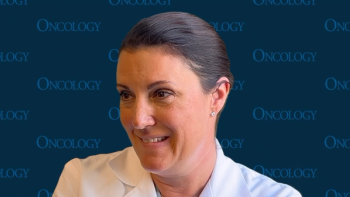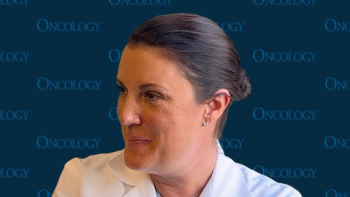
Oncology NEWS International
- Oncology NEWS International Vol 8 No 12
- Volume 8
- Issue 12
FDA Approves Taxol as Adjuvant Therapy for Node+ Breast Cancer
ROCKVILLE, Md-The Food and Drug Administration has approved a new indication for Bristol-Myers Squibb’s Taxol (paclitaxel) for use in the adjuvant treatment of node-positive breast cancer administered sequentially to standard doxorubicin-based combination therapy. The approval does not exclude patients with receptor-positive tumors, even though a subgroup analysis of the supporting data suggested no benefit in this group.
ROCKVILLE, MdThe Food and Drug Administration has approved a new indication for Bristol-Myers Squibbs Taxol (paclitaxel) for use in the adjuvant treatment of node-positive breast cancer administered sequentially to standard doxorubicin-based combination therapy. The approval does not exclude patients with receptor-positive tumors, even though a subgroup analysis of the supporting data suggested no benefit in this group.
The approval came only a month after a unanimous recommendation for approval by the FDAs Oncologic Drugs Advisory Committee (ODAC). (See Oncology News International, October 1999, page 4, for a full report of the meeting.)
At the ODAC meeting, Bristol-Myers Squibb presented data on more than 3,000 patients in a randomized phase III study. The results showed that the adjuvant use of Taxol reduced the risk of breast cancer recurrence in node-positive patients by 22% and reduced mortality by 28%, compared with patients who received doxorubicin-based chemotherapy alone.
The indication states: In the clinical trial, there was an overall favorable effect on disease-free and overall survival in the total population of patients with receptor-positive and receptor-negative tumors, but the benefit has been specifically demonstrated by available data (median follow-up 30 months) only in the patients with estrogen and progesterone negative tumors.
The agent was first approved in the United States in late 1992 for the second-line treatment of ovarian cancer. It has since won approval for use in breast cancer after failure of combination chemotherapy for metastatic disease; for the first-line treatment of ovarian cancer in combination with cisplatin (Platinol); for the second-line treatment of AIDS-related Kaposis sarcoma; and in combination with cisplatin for the first-line treatment of non-small-cell lung cancer.
Articles in this issue
about 26 years ago
SWOG to Study Docetaxel/Estramustine in Advanced Prostate Cancerabout 26 years ago
US Smoking Rates No Longer Falling, Due to More Young Smokersabout 26 years ago
Americans Favor Higher Cigarette Tax to Balance the Budgetabout 26 years ago
Saint Vincents Hospital Opens Comprehensive Cancer Centerabout 26 years ago
New Breast Biopsy Techniques Allow ‘One-Stop’ Proceduresabout 26 years ago
Director of NCI Mentioned as a Candidate to Head NIHabout 26 years ago
Challenges in Designing Chemoprevention Trialsabout 26 years ago
Black Women Underrepresented in Breast Cancer Trialsabout 26 years ago
UnitedHealthcare Plan Gives Physicians Final Say on Careabout 26 years ago
New Agents, Sequential Schedules Hold PromiseNewsletter
Stay up to date on recent advances in the multidisciplinary approach to cancer.


















































































